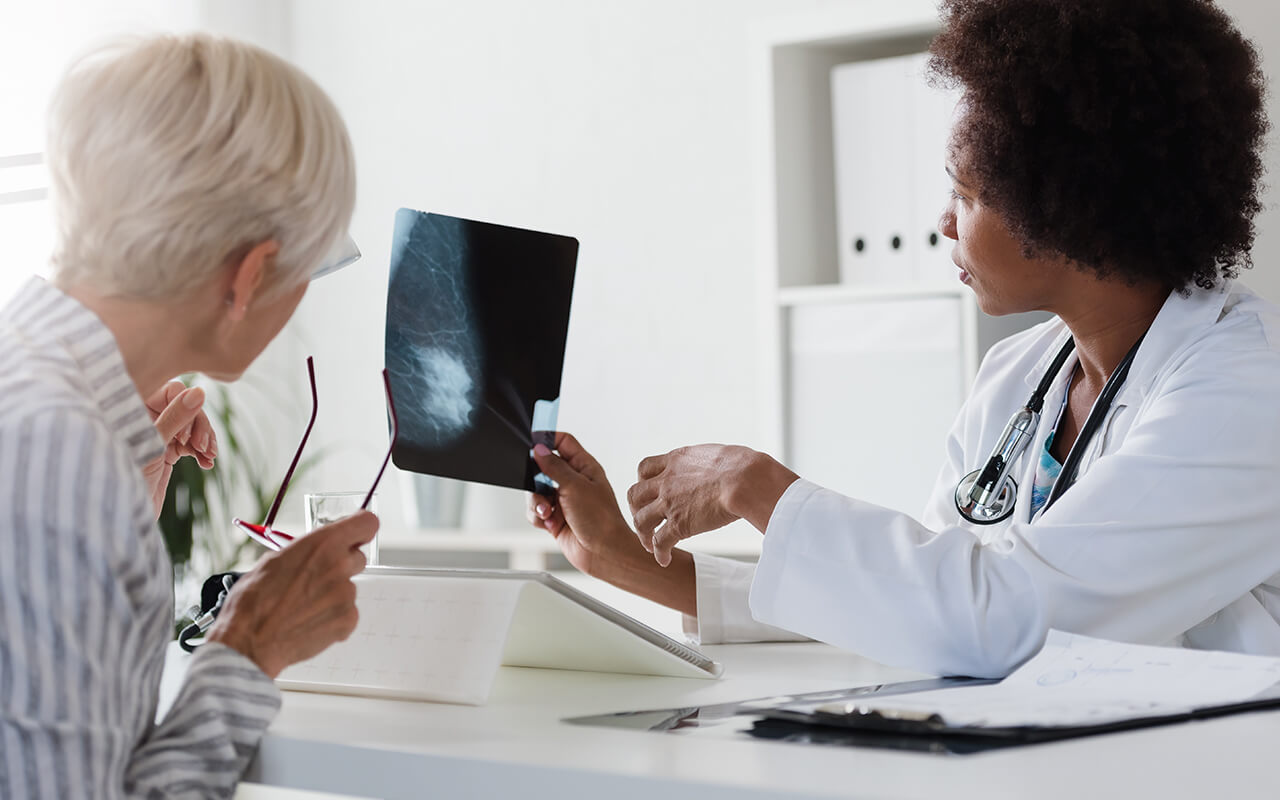Mammograms: What You Need to Know

One in eight. That’s how many women in the United States will develop breast cancer in their lifetimes.1
The best way to protect yourself is by having mammograms.2 These tests can help save lives by finding breast cancer early, when it’s easier to treat and before it can be felt or cause symptoms.2 Here’s what you need to know about mammograms and breast cancer.
1. Women between the ages of 40 and 74 should get a screening mammogram every other year.
A screening mammogram is for women who have no signs or symptoms of breast cancer. This includes women who have breast implants.
2. With your BCBSRI plan, screening mammograms are typically covered at 100% when you see an in-network provider.
A referral isn’t needed for screening mammograms. Please note that if you have a mammogram before age 40, it may not be considered a screening and you may have a cost share. If you have any questions about your benefits or need help finding a test facility, talk with your PCP or call BCBSRI Customer Service.
3. A mammogram is a low-dose X-ray exam of the breasts.
When you have a mammogram, you stand in front of a special X-ray machine. The person who takes the X-rays places your breast between two plastic plates. The plates press your breast and make it flat. You will feel some pressure. The steps are repeated to make a side view of the breast. The other breast will be x-rayed in the same way. Afterwards, a doctor will look at the X-ray for early signs of breast cancer or other problems. If you don’t receive your results within 30 days, please contact your PCP or the office where you had the mammogram.
4. If your mammogram shows a problem, it doesn’t always mean it is cancer.
According to the American Cancer Society, only about 2 to 4 screening mammograms in 1,000 lead to a diagnosis of breast cancer.3 If you have a screening test result that isn’t normal, your doctor will schedule additional mammograms, tests, or exams to find out whether it is due to cancer or another cause.
5. Being a woman and getting older are the main risk factors for breast cancer.4
Let your PCP know if you have other risk factors for breast cancer, such as a personal or family history of breast cancer, ovarian cancer, or breast diseases. Your PCP can also help you make lifestyle changes that help lower your risk of breast cancer, such as being more active, maintaining a healthy weight, drinking less alcohol, and quitting smoking.
6. Let your PCP know if you notice any changes in your breasts.
This includes pain in any area of the breast, a lump, thickening or swelling, liquid leaking from the nipple, or changes in how your nipple looks. Your PCP may order a diagnostic mammogram, which is for people with signs or symptoms of breast cancer. However, those signs and symptoms can also be caused by conditions that are not cancer.
How to get ready for your mammogram
When scheduling your appointment
- If you’ve recently received a COVID-19 vaccine, many experts recommend scheduling your mammogram four to six weeks after getting your shot. The COVID-19 vaccine can cause swelling in the lymph nodes in the underarm, which can cause a false reading on a mammogram.5 If you are due for both a mammogram and a COVID-19 vaccine, please talk to your PCP about which to have first and about any other questions you may have.
- If you are still having menstrual periods, try to avoid making your mammogram appointment during the week before your period. Your breasts will be less tender and swollen, and the picture will be better.
- Tell the clinic if you have breast implants when you make your appointment. They may need to take more pictures than a regular mammogram.
- If you’ve had mammograms at another facility, have those X-rays sent to the new facility so they can be compared to the new ones.
- Tell the clinic if you are living with a disability that may make it hard for you to sit up, lift your arms, or dress yourself. Also, let them know if you use a wheelchair or scooter.
- Talk with the staff about how they will handle issues of modesty that you may have.
On the day of your mammogram
- Do not wear deodorant, perfume, lotion, or powder under your arm or on your breasts. It might show up on the X-ray.
- Wear a shirt with shorts, pants, or a skirt. This way, you can undress from the waist up and leave your shorts, pants, or skirt on when you get your mammogram.
1American Cancer Society, Breast Cancer Statistics | How Common Is Breast Cancer?
2FDA, Mammograms
3American Cancer Society, Tips for Getting a Mammogram
4CDC, What Are the Risk Factors for Breast Cancer?
5CDC, Getting a COVID-19 Vaccine